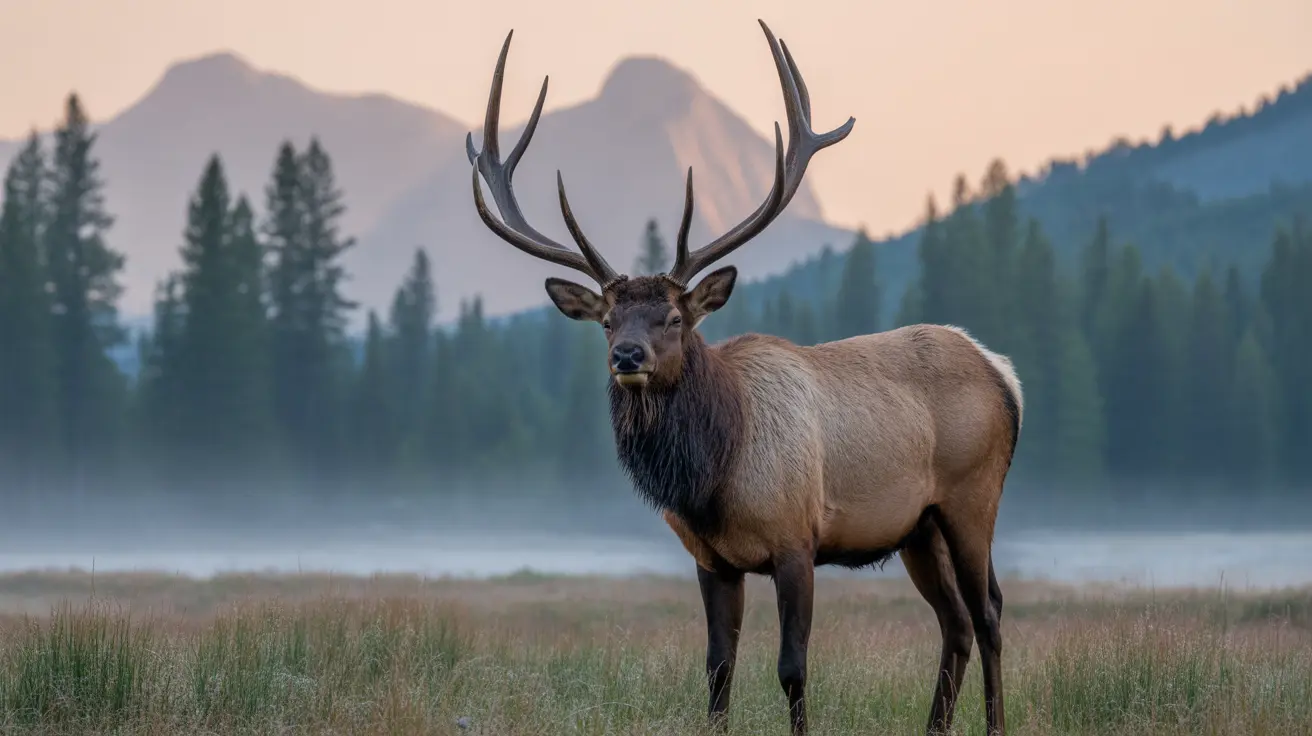Rocky Mountain National Park stands as one of America's premier destinations for wildlife enthusiasts, offering visitors extraordinary opportunities to observe native animals in their natural alpine habitat. From majestic elk grazing in meadows to elusive mountain lions prowling through forests, this Colorado treasure hosts an incredible diversity of species that captivate millions of visitors annually.
Understanding the park's wildlife not only enhances your visit but also ensures safe and respectful encounters with these magnificent creatures. Whether you're planning your first trip or returning for another adventure, knowing what animals call this high-altitude wilderness home will help you make the most of your Rocky Mountain National Park wildlife experience.
Most Common Wildlife You'll Encounter
During your visit, you're most likely to spot several species that have adapted remarkably well to the park's varied ecosystems. Elk viewing represents one of the park's most popular attractions, with herds frequently visible in open meadows during dawn and dusk hours. These impressive animals, weighing up to 700 pounds, create unforgettable moments as they bugle during autumn mating season.
Mule deer gracefully navigate the park's terrain, easily identified by their large ears and distinctive black-tipped tails. Bighorn sheep demonstrate incredible agility as they traverse steep rocky slopes, while moose sightings, though less frequent, provide thrilling encounters especially in the park's western valleys.
Yellow-bellied marmots add charm to high-altitude areas, often seen sunbathing on rocks or standing sentinel near their burrows. These social creatures serve as excellent subjects for wildlife photography while remaining relatively approachable from safe distances.
Wildlife Safety Tips and Best Viewing Practices
Maintaining proper distance from all wildlife ensures both your safety and the animals' well-being. Park regulations require visitors to stay at least 75 feet away from most animals—equivalent to two bus lengths. For potentially dangerous species like moose, bears, and mountain lions, increase this distance to a minimum of 120 feet.
Never feed wildlife, as this creates dangerous dependencies and aggressive behaviors. Carry bear spray in areas where black bear encounters might occur, though these magnificent predators remain rare with only 20-30 adults residing within park boundaries.
Best Spots to See Animals Throughout the Park
Certain locations within Rocky Mountain National Park offer exceptional wildlife viewing opportunities. Moraine Park serves as an elk haven, particularly during early morning and evening hours. The expansive meadows provide ideal grazing conditions while offering visitors excellent vantage points.
Horseshoe Park mirrors Moraine Park's appeal for elk and deer watching, while Sheep Lakes earned its name from the bighorn sheep that regularly visit to drink and lick mineral-rich soil. Kawuneeche Valley on the park's west side provides the best opportunities for moose sightings among willows and wetlands.
Rare and Elusive Species
While black bear encounters remain uncommon due to their small population, these powerful animals deserve respect and caution. Mountain lion facts include their status as the park's most elusive predator, with sightings extremely rare despite their presence throughout the ecosystem.
The park's high-altitude environment supports specialized species like pikas, small rabbit-like mammals that thrive in rocky talus slopes. Their distinctive calls echo across alpine areas, though spotting these quick creatures requires patience and keen observation.
Climate Impact on Wildlife and Conservation Efforts
Native mammal species face increasing challenges from climate change, which shifts traditional habitats and food sources. Alpine wildlife adaptations become crucial as temperatures rise and precipitation patterns change.
Wildlife habitat conservation efforts include ongoing monitoring programs and restoration projects designed to protect biodiversity. Park scientists track population changes, migration patterns, and breeding success to ensure these animals continue thriving for future generations.
Wildlife Photography Tips for Visitors
Successful wildlife photography requires patience, proper equipment, and respect for animals' space. Early morning and late afternoon provide optimal lighting conditions while coinciding with peak animal activity periods.
Long telephoto lenses allow photographers to capture stunning images while maintaining safe distances. Always prioritize animal welfare over the perfect shot, and remember that park visitor guidelines apply to photographers just as they do to all visitors.
Frequently Asked Questions
What are the most common animals I might see during a visit to Rocky Mountain National Park?
Visitors frequently encounter elk, mule deer, bighorn sheep, moose, and yellow-bellied marmots, especially during dawn and dusk when these animals are most active.
How close can I safely get to wildlife in Rocky Mountain National Park, especially large mammals like elk and bears?
For most wildlife, keep at least 75 feet away—two bus-lengths—and maintain a minimum of 120 feet from potentially dangerous animals such as moose, bears, and mountain lions to ensure safety for both you and the animals.
Are there bears and mountain lions in Rocky Mountain National Park, and how likely am I to see them?
Black bears are present but rare, with only about 20–30 adults in the park; sightings are uncommon and require extra caution. Mountain lions are extremely elusive and rarely seen by visitors.
What is the best time of year to visit Rocky Mountain National Park for wildlife viewing, and where are the best spots?
The best wildlife viewing occurs from late spring to early fall, especially during dawn and dusk. Moraine Park and Horseshoe Park are excellent for elk and deer, Sheep Lakes for bighorn sheep, and Kawuneeche Valley for moose.
How does weather and climate change affect wildlife in Rocky Mountain National Park, and what conservation efforts are in place?
Climate change is shifting habitats, impacting species like the pika and alpine plants. The park runs active restoration programs—including species monitoring and habitat repair—to protect biodiversity and manage invasive species.
Rocky Mountain National Park's diverse wildlife creates memories that last a lifetime. By following safety guidelines, respecting animal habitats, and choosing optimal viewing times and locations, you'll maximize your chances of witnessing these incredible creatures in their natural environment while contributing to their ongoing conservation.






